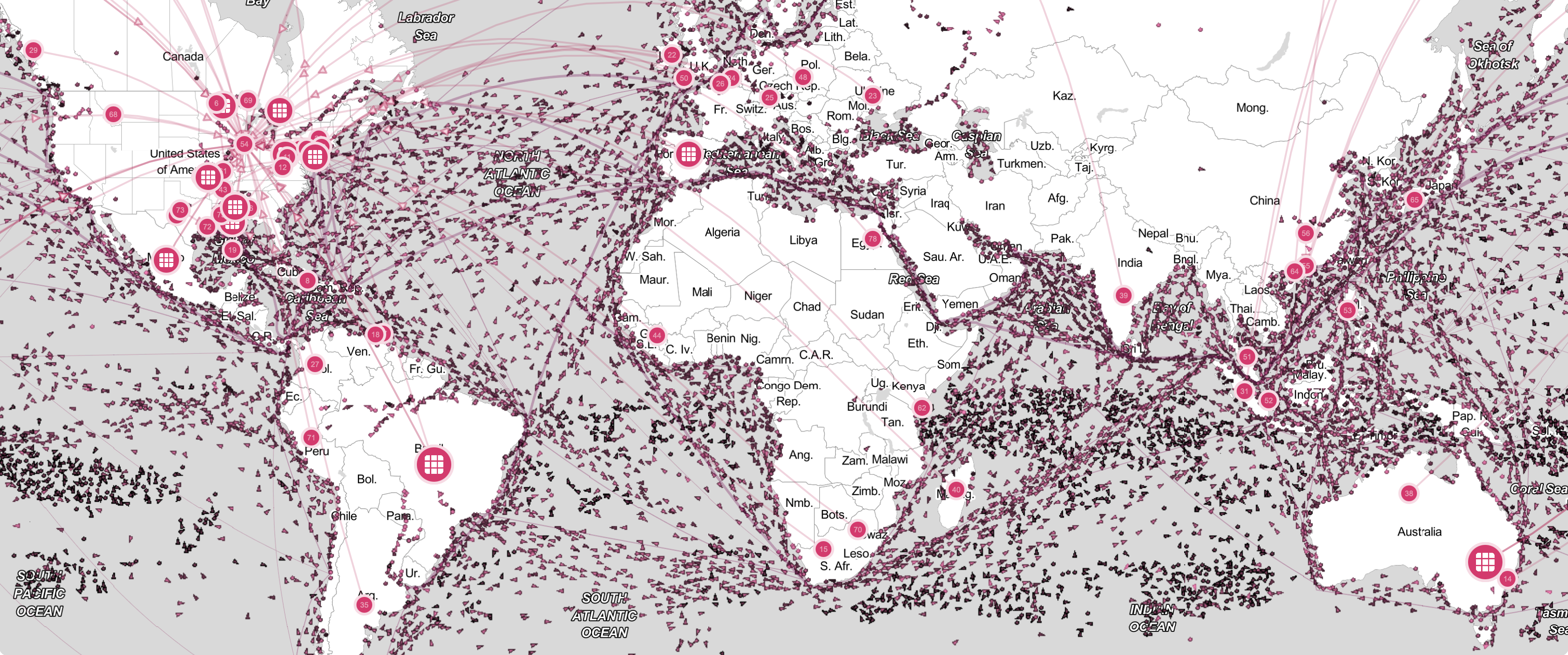On the Critical Study of Supply Chains, Logistics, and our Global Assemblies of Assembly.

A special issue of the Annals of the History of Computing edited by Matthew Hockenberry and Miriam Posner.
Delivery Exception brings together scholars and organizers to talk about supply chain justice.
We are launching a research network for the critical study of logistics.
I am pleased to share that Manifest has been awarded a Digital Humanities Advancement Grant from the National Endowment for the Humanities. We will be using the grant to further develop the research network around Manifest and build more comphrensive curriculum materials for the critical study of logistics in the humanities.
Photographs of vinyl sheets and cardboard inserts in awkward approximation of absent goods are mocked by some, but suggest to others signs of deliberate subterfuge. Even mundane maritime maps are assembled as evidence of – commenters claim – countries “under attack.”
An interactive sample of tweets that show some of the social media discourse around the supply chain crisis.
Here the manifest becomes an accounting of injuries. I think this provides a better model for unraveling the global supply chain than transparency. Rather than allow transparency to remain as a form of corporate responsibility, with “mapping the supply chain” an exercise in corporate power, “making out its manifest” might now attempt to account for our value, and our injuries. It records the places where labor has been exploited, where the earth has been plundered, where waste overruns into rivers, and poison bleeds into the air. It is not a proclamation from on high, but an admonition from below. Not an attempt at supply chain resilience, but an opportunity for supply chain reconciliation.
Assembly Codes examines how logistics—the techniques of organizing and coordinating the movement of materials, bodies, and information—has substantially impacted the production, distribution, and consumption of media, while demonstrating that media technologies are central to its operation. In charting the specific points of contact, dependence, and friction between media and logistics, it argues that one cannot be understood apart from the other.
Merging visual representation with textual listing, the mail-order catalogue brought the anticipation of availability to the work of supply. As it did, it crystalized the expectations of capitalism for contemporary consumer culture. This essay surveys some examples of this form around this moment of transformation: as the catalogue form gave way to the catalogue function, and the raw stuff of supply transformed into an operative relation—an ontological object defined not by material presence, but by the potential for supply.